58 years ago the world's first nuclear submarine was launched. Secrets of "Nautilus" ("Nautilus")
21 January 1954, the nuclear submarine "Nautilus" ("Nautilus") was launched. It was the first submarine with a nuclear reactor, allowing months to be in the autonomous navigation without lifting to the surface. A new page has opened in stories Cold War ...
The idea to use a nuclear reactor as a power plant of submarines originated in the Third Reich. Prof. Heisenberg’s non-oxygen-using “uranium machines” (the so-called nuclear reactors at that time) were intended primarily for the “underwater wolves” Kriegsmarine. However, the German physicists failed to bring the work to a logical conclusion, and the initiative passed to the United States, which for some time was the only country in the world with atomic reactors and bombs.
In the early years of the Cold War between the USSR and the USA, long-range bombers were thought to be American carriers of the atomic bomb. The United States had extensive experience in the combat use of this type of weapon, the American strategic aviation possessed a reputation as the most powerful in the world, finally, the territory of the United States was considered largely immune to the enemy’s retaliatory strike. However, the use of aircraft required their base in close proximity to the borders of the USSR. As a result of the diplomatic efforts undertaken in July 1948, the Labor Government agreed to deploy 60 B-29 bombers with atomic bombs in the UK. After the signing of the North Atlantic Pact in April 1949, all of Western Europe became embroiled in the US nuclear strategy, and the number of American bases abroad by the end of the 1960s reached 3400!
However, over time, the US military and politicians have come to understand that the presence of strategic aviation in foreign territories is associated with the risk of a change in the political situation in a particular country, therefore the carrier of nuclear power weapons in the future war, the fleet was increasingly seen. Finally, this trend strengthened after convincing tests of atomic bombs near the Bikini Atoll.
In 1948, the American designers completed the development of the design of a nuclear power plant and proceeded to the design and construction of an experimental reactor.
Thus, there were all prerequisites for creating fleet nuclear submarines, which not only had to carry nuclear weapons, but also had an atomic reactor as a power plant.
Construction of the first such boat, named in honor of the fantastic submarine, invented by Jules Verne, "Nautilus" and having the designation SSN-571, began 14 June 1952, in the presence of US President Harry Truman at the shipyard in Groton.
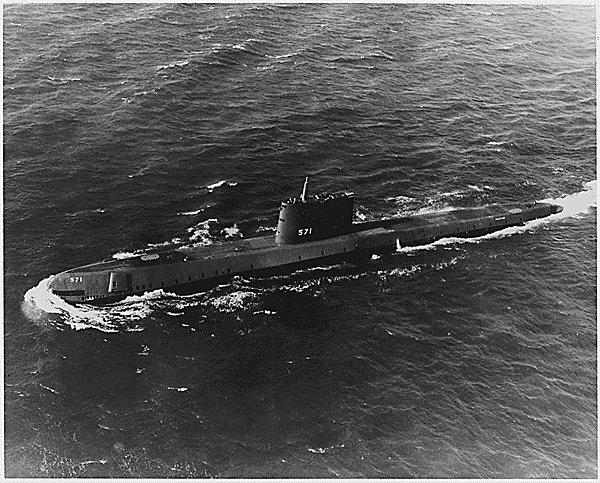
21 January 1954, in the presence of US President Eisenhower "Nautilus" was launched, and after eight months - September 30 1954 - adopted by the US Navy.
17 January 1955, the "Nautilus" went on sea trials in the open ocean, and its first commander, Eugene Wilkinson, broadcast on the air in clear text: "Let's go under the atomic engine."
Apart from an absolutely new power plant “Mark-2”, the boat was of the usual design. With a Nautilus displacement of about 4000 tons, the twin-shaft nuclear power plant with a total power of 9860 kilowatts provided a speed of more than 20 nodes. The submerged sailing range was 25 thousands of miles with 450 consumption of grams U235 per month. Thus, the duration of the voyage depended only on the correct operation of the means of air regeneration, food stocks and endurance of personnel.
At the same time, however, the specific gravity of the nuclear installation turned out to be very high, because of this, it was not possible to install part of the weapons and equipment provided by the project on Nautilus. The main cause of weighting was biological protection, which included lead, steel and other materials (about 740 tons). As a result, all the weapons of the Nautilus were 6 nasal torpedo tubes with ammunition in 24 torpedoes.
* * *
As in any new business, it was not without problems.
Even during the construction of the Nautilus, and specifically during the testing of the power plant, there was a rupture of the secondary circuit, through which saturated steam with a temperature around 220 ° C and under pressure 18 atmospheres came from the steam generator to the turbine. Fortunately, it was not the main, but an auxiliary steam line.
The cause of the accident, as established during the investigation, was a manufacturing defect: instead of pipes made of high-quality carbon steel A-106, pipes of less durable material A-53 were included in the steam line. The accident forced American designers to question the feasibility of using welded pipes in submarine systems operating under pressure.
Elimination of the consequences of the accident and the replacement of already assembled welded pipes with seamless ones delayed the completion of the Nautilus construction for several months.
After the launch of the boat, rumors began to circulate in the media, as if Nautilus personnel received serious doses of radiation due to flaws in the bioprotection structure. It was reported that the naval command had to urgently make a partial replacement of the crew, and put the submarine in the dock to make the necessary changes to the protection design. How true this information is, is not known until now.
4 May 1958 of the year on the "Nautilus", submerged from Panama to San Francisco, there was a fire in the turbine compartment. The ignition of the oil-borne left-sided turbine insulation was found to have started a few days before the fire, but its signs were left without proper attention. A slight smell of smoke was taken for the smell of fresh paint. The fire was discovered only when the finding of personnel in the compartment because of the smoke became impossible. There was so much smoke in the compartment that the submariners in smoke masks could not find its source.
Without finding out the reasons for the appearance of smoke, the ship commander gave the order to stop the turbine, ascend to the periscope depth and try to ventilate the compartment through the snorkel. However, these measures did not help, and the boat was forced to float in the surface position. Reinforced ventilation of the compartment through the open hatch with the help of an auxiliary diesel generator finally brought its results. The amount of smoke in the compartment decreased, and the crew managed to find a place of fire. Two sailors in smoke masks (there were only four such masks on the boat) with the help of knives and pliers began to tear off the glowing insulation from the turbine hull. A column of flame about a meter high was knocked out from under the torn piece of insulation. In the course went foam extinguishers. The flames were shot down and the insulation stripping continued. People had to change every 10-15 minutes, as acrid smoke penetrated even into masks. After only four hours, all the isolation from the turbine was removed and the fire extinguished.
After the arrival of the boat in San Francisco, its commander carried out a number of activities aimed at improving the fire safety of the ship. In particular, the old insulation was removed from the second turbine. Insulating breathing apparatus was provided to all personnel of the submarine.
In May, the 1958 of the year, during the preparation of the Nautilus for a trip to the North Pole by boat, the water flow of the main condenser of a steam turbine installation took place. Seawater infiltrated into the condensate-nutrient system could be the cause of salinization of the second circuit and entail the failure of the entire energy system of the ship. Repeated attempts to find a leak did not lead to success, and the submarine commander made an original decision. After the arrival of the “Nautilus” in Seattle, sailors in civilian clothes - the preparation of the campaign was kept strictly confidential - they bought up all the patented liquid in automobile stores to fill the radiators of cars to stop leaks.
Half of this liquid (about 80 liters) was poured into the condenser, after which neither in Seattle nor later did the problem of salinization of the capacitor arise during the trip. Probably, the flow was in the space between the double tube plates of the condenser and stopped after pouring this space with a self-hardening mixture.
10 November 1966 of the year during the NATO Navy exercises in the North Atlantic "Nautilus", which went into the attack in the periscope position on the American aircraft carrier "Essex" (displacement 33 thousand tons), collided with it. As a result of the collision, the aircraft carrier received an underwater hole, and the fence of the sliding devices was destroyed on the boat. Accompanied by the destroyer, the Nautilus reached its own speed at a speed of about 10 nodes to a naval base in New York, overcoming a distance of about 360 miles.
* * *
22 July 1958, the Nautilus, commanded by William Andersen, left Pearl Harbor to reach the North Pole.
It all started with the fact that at the end of 1956, the head of the Navy Admiral Burke received a letter from Senator Jackson. The senator was interested in the possibility of actions of atomic submarines under the pack ice of the Arctic. This letter was the first sign, which made the command of the American fleet seriously think about organizing a campaign to the North Pole. True, some of the American admirals considered the venture reckless and was strongly opposed. Despite this, the commander of the submarine forces of the Atlantic fleet considered the polar campaign to be a decided matter.
Anderson began to prepare for the upcoming campaign with tripled zeal. A special equipment was installed on the Nautilus, which made it possible to determine the state of the ice, and the new MK-19 compass, which, unlike ordinary magnetic compasses, operated in high latitudes. Just before the trip, Anderson got the most recent maps and charts from the depths of the Arctic, and even made a flight, the route of which coincided with the planned Nautilus route.
19 August 1957 "Nautilus" headed for the area between Greenland and Spitsbergen. The first trial exit of the submarine for pack ice was unsuccessful. When the sonar meter recorded zero ice thickness, the boat attempted to surface. Instead of the expected polynya, the Nautilus met a drifting ice floe. From a collision with it, the boat severely damaged the only periscope, and the commander of the "Nautilus" decided to go back to the edge of the packs.
The twisted periscope was repaired in field conditions. Anderson was rather skeptical about how stainless steel welders work - even under ideal factory conditions, such welding required a lot of experience. Nevertheless, the crack formed in the periscope was repaired, and the device began to act again.
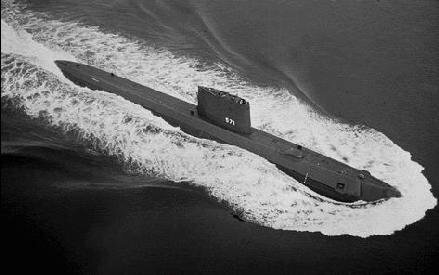
The second attempt to reach the pole did not bring results either. A couple of hours after the Nautilus crossed the 86 parallel, both gyrocompasses failed. Anderson decided not to tempt fate and gave the order to turn - at high latitudes even a tiny deviation from the correct course could be fatal and lead the ship to a foreign coast.
At the end of October, 1957, Anderson delivered a white paper at the White House, which was devoted to a recent march under the Arctic ice. The report was listened to with indifference, and William was disappointed. The stronger was the desire of the commander of the "Nautilus" to go to the pole again.
Thinking over this voyage, Anderson prepared a letter to the White House, in which he convincingly argued that going over the pole would become a reality next year. From the presidential administration made it clear that the commander of the "Nautilus" can count on support. The idea became interested in the Pentagon. Shortly thereafter, Admiral Burke reported on the impending campaign to the President himself, who was very enthusiastic about Anderson’s plans.
The operation was to be conducted in an atmosphere of strict secrecy - the command feared a new failure. Only a small group of people in the government knew about the details of the campaign. To hide the true reason for installing additional navigation equipment on the Nautilus, the ship’s participation in joint training maneuvers together with the Skate and Khafbik boats was announced.
9 June 1958, the Nautilus set off on his second polar voyage. When Seattle was left far behind, Anderson ordered the submarine number on the fencing of the wheelhouse to be painted over to keep it incognito. On the fourth day of the journey, the Nautilus approached the Aleutian Islands. Knowing that he would have to go through shallow water, the captain commanded the ascent. The "Nautilus" maneuvered for a long time in the area - looking for a convenient break in the chain of islands to get to the north. Finally, navigator Jenkins discovered a fairly deep passage between the islands. Having overcome the first obstacle, the submarine entered the Bering Sea.
Now the Nautilus had to slip through the narrow and ice-covered Bering Strait. The path to the west of the St. Lawrence Island turned out to be completely closed by pack ice. The draft of some icebergs exceeded ten meters. They could easily crush the Nautilus, pushing the submarine to the bottom. Despite the fact that much of the journey was completed, Anderson gave the order to follow the reverse course.
The commander of the Nautilus did not despair - perhaps the eastern passage through the strait would be more friendly to rare guests. The boat emerged from the Siberian ice and headed south of St. Lawrence Island, intending to pass into the deep waters past Alaska. The next few days of the march passed without incident, and in the morning on June 17 the submarine reached the Chukchi Sea.
And then Anderson's bright expectations collapsed. The first alarm was the appearance of an ice floe of nineteen meters thick, which went straight to the submarine ship. Collisions with her were avoided, but the recorders of the instruments warned: an even more serious obstacle was in the path of the boat. Having nestled to the very bottom, the Nautilus slipped under a huge ice floe at a distance of only one and a half meters from it. To avoid death was only a miracle. When the pen of the recorder finally went up, indicating that the boat had missed the ice floe, Anderson realized: the operation had failed completely ...
The captain sent his ship to Pearl Harbor. There was still hope that at the end of the summer the border of the ice would move to deeper regions, and one more attempt could be made to get to the pole. But who will give her permission after so many failures?
The reaction of the top US military was immediate - Anderson was summoned to Washington for an explanation. The commander of the "Nautilus" was doing well, showing perseverance. His report for senior Pentagon officers expressed the firm conviction that the next, July, march would undoubtedly be crowned with success. And he was given another chance.
Anderson immediately began to act. To observe the ice situation, he sent his navigator Jenks to Alaska. For Jenks, they composed a legend according to which he was an officer of the Pentagon who was endowed with special powers. Arriving in Alaska, Jenks took to the air almost all the patrol aircraft, which daily conducted observations in the area of the future route "Nautilus". In mid-July, Anderson, who was still in Pearl Harbor, received the long-awaited news from his navigator: the ice situation became favorable for the transpolar transition, the main thing is not to miss the moment.
22 July nuclear submarine with wiped numbers left Pearl Harbor. "Nautilus" was going at maximum speed. On the night of July 27, Anderson led the ship to the Bering Sea. Two days later, having completed the 2900-mile journey from Pearl Harbor, the Nautilus had already cut the waters of the Chukchi Sea.
1 August submarine descended under the pack ice of the Arctic, sometimes going into the water to a depth of twenty meters. To carry out the "Nautilus" under them was not easy. Almost all the time, Anderson himself was on watch.
The crew of the ship was excited about the upcoming event, which I wanted to note properly. Some, for example, suggested twenty-five small circles be described around the pole. Then the "Nautilus" could enter the Guinness Book of Records as a ship, the first in the history of navigation 25 committed world voyages in one trip. Anderson rightly believed that such maneuvers are out of the question - the probability of losing the course is too great. The commander of the Nautilus was worried about completely different problems. To cross the pole as accurately as possible, Anderson did not take his eyes off the pointers of electronic navigation devices. 3 August at twenty-three hours and fifteen minutes the goal of the campaign - the North Geographical Pole of the Earth - was reached.
Without lingering around the pole longer than required by collecting statistical information on the state of ice and seawater, Anderson sent a submarine into the Greenland Sea. Nautilus was to arrive in the Reykjavik area, where a secret meeting was to take place. The helicopter, which was waiting for the submarine at the rendezvous point, removed only one person from the submarine, Commander Anderson. Fifteen minutes later, the helicopter landed in Keflavik next to the transport plane ready for dispatch. When the aircraft’s wheels touched the landing strip of the airfield in Washington, Anderson was already awaited by a car sent from the White House — the president wanted to see the Nautilus commander. After the report on the operation, Anderson was again returned to the boat, which during this time had reached Portland.

Six days later, the Nautilus and its commander entered New York with honor. A military parade was organized in their honor ...
* * *
Among modern myths there is one.
It is said that experiments on the establishment of a telepathic connection were conducted on the submarine "Nautilus".
This information was voiced at the end of the 1950-s by two French conspiracy theorists - Louis Powell and Jacques Bergier. Their article did not pass by the attention of the Soviet authorities defending the country from a potential aggressor. 26 March 1960, Minister of Defense Marshal Malinovsky received a report from the engineer-colonel, Ph.D. Poletayev:
"In the US Armed Forces adopted telepathy (transfer of thoughts over a distance without the help of technical means) as a means of communication with submarines sailing ... Scientific research on telepathy has been conducted for a long time, but since the end of 1957, large research organizations have joined the work USA: Rend Corporation, Westinghouse, Bell Company Phone and others. At the end of the work, an experiment was carried out - transmitting information via a telepathic connection from the base to the submarine “Nautilus”, which was submerged under the polar ice at a distance of 2000 kilometers from the base. The experience was a success. ”
The Minister, as expected, became keenly interested in such a startling success of a potential adversary. Several secret meetings were held with the participation of Soviet specialists in parapsychology. The possibility of opening works on the study of the phenomenon of telepathy in the military and military medical aspects was discussed, but at the time they ended in nothing.
In the middle of 1990, the correspondents of the Chicago magazine ZIS WICK took a series of interviews with Captain Nautilus Anderson. His answer was categorical: “There was definitely no telepathy experience. The article of Lord and Bergier is entirely false. 25 July 1960, the day when, according to the authors, the Nautilus went to sea to conduct a telepathic communication session, the boat was in dry dock in Portsmouth.
These statements were verified by journalists through their own channels and turned out to be true.
According to the author of the book “Parapsychological War: Threat or Illusion,” Martin Ebon, behind the articles on “Nautilus” was ... The USSR State Security Committee! The purpose of the "duck", according to the author, is quite original: to convince the Central Committee of the CPSU to give the go-ahead to the beginning of similar work in the Union. Say, party leaders, educated in the spirit of dogmatic materialism, were prejudiced against idealistic parapsychology. The only thing that could push them to develop relevant research was information about successful developments abroad ...
* * *
3 March 1980 of the year “Nautilus”, after 25 years of service, was expelled from the fleet and declared a national historical monument. Plans were made to convert the submarine to a museum for public display. After the decontamination was completed and a large amount of preparatory work was completed on 6 on July 1985, the Nautilus was towed to Groton, Connecticut. Here at the US Submarine Museum, the world's first nuclear submarine is open to the public.
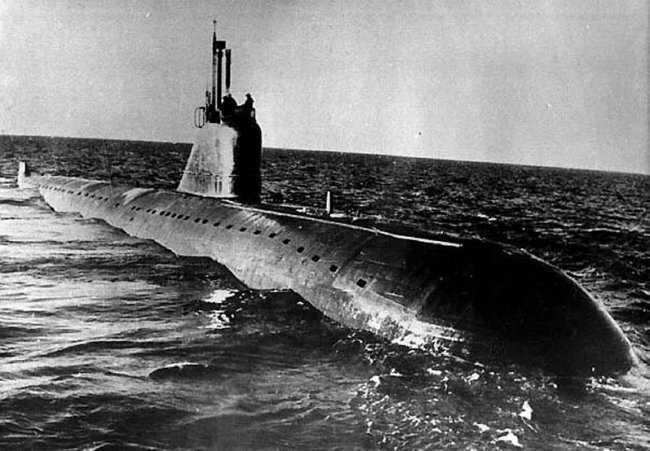
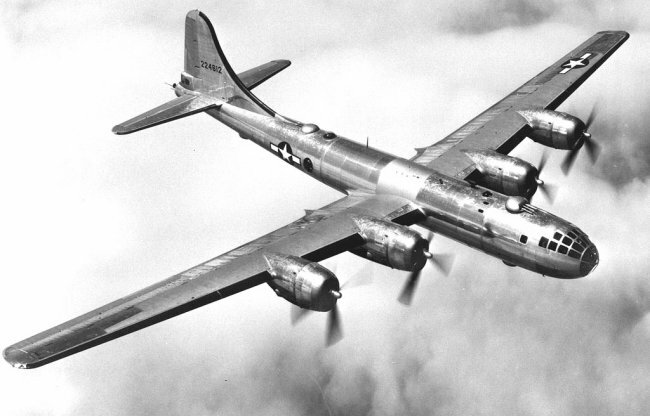

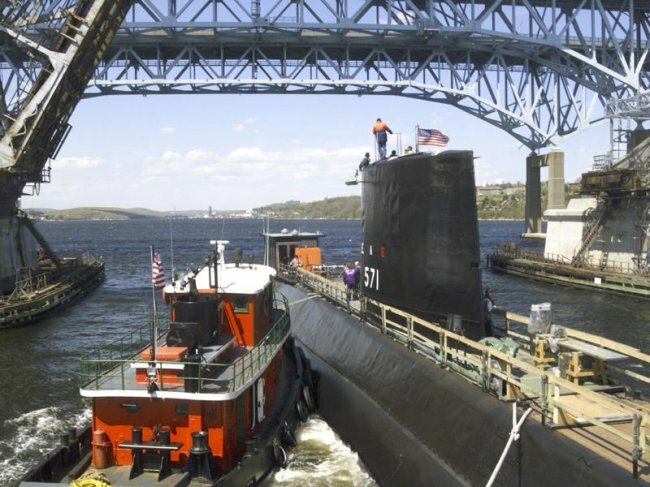
Information